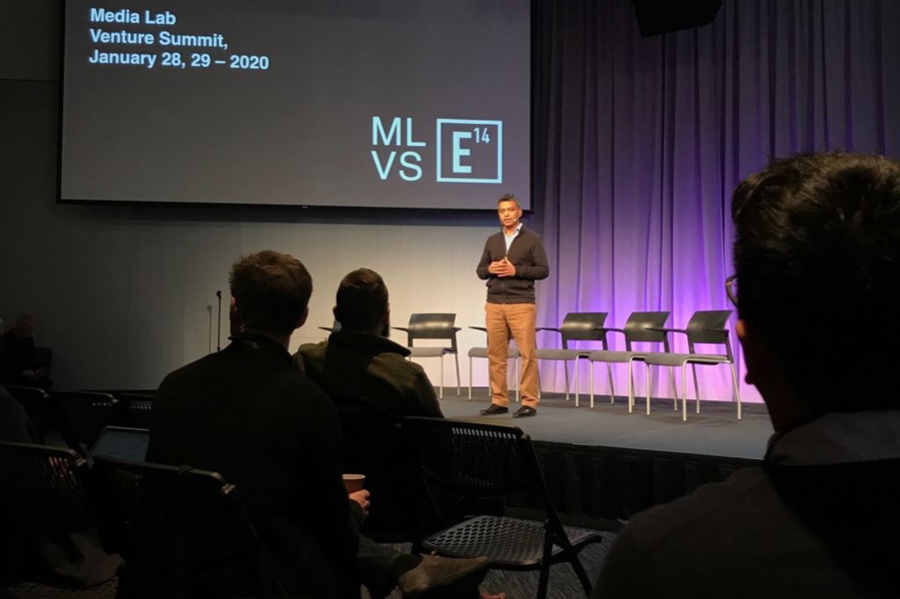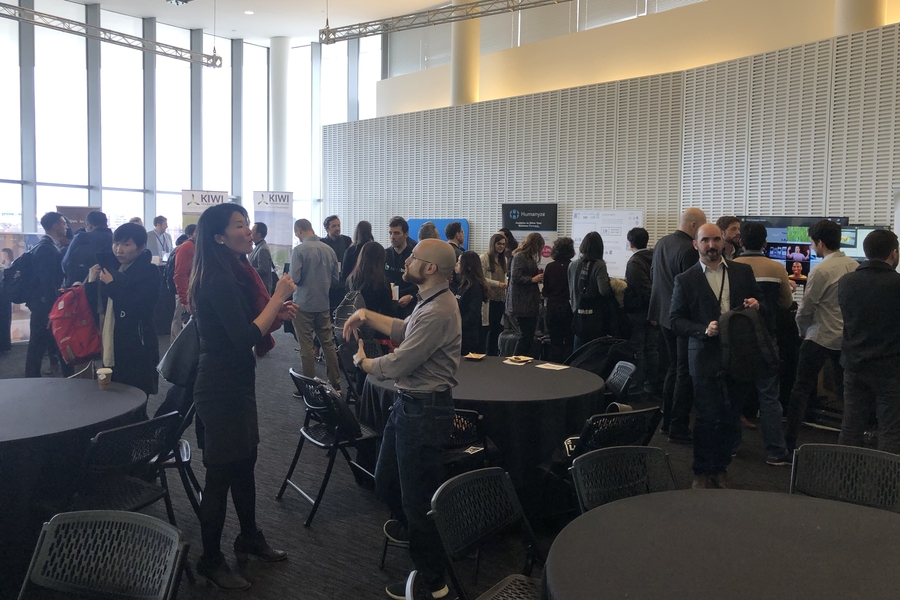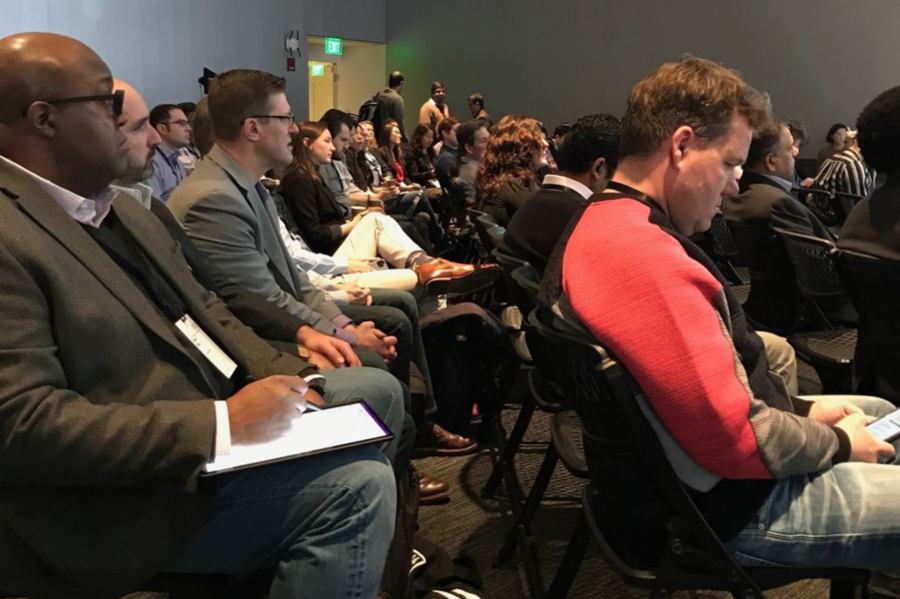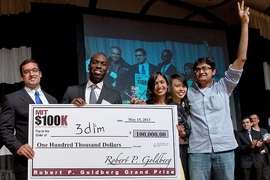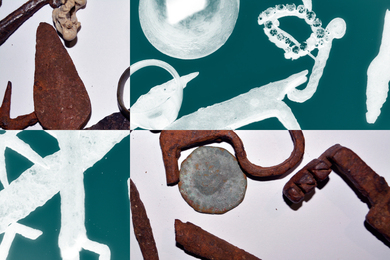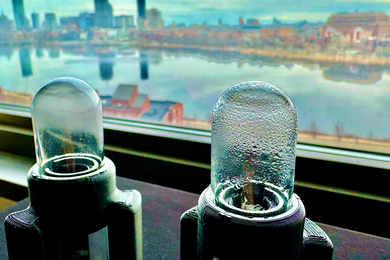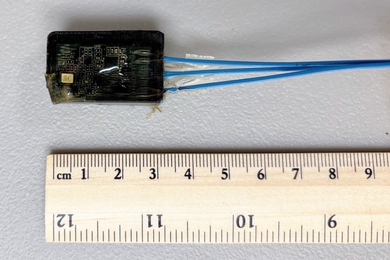In collaboration with the E14 Fund, on Jan. 28-29 the MIT Media Lab hosted the inaugural Media Lab Venture Summit — the first-ever celebration of the myriad spinoff companies created by the extended community of Media Lab alumni, research staff, and faculty members.
Slated to become an annual event, the summit convened on the sixth floor of Building E14, with introductory talks by Deb Roy, professor of media arts and sciences and Media Lab executive director of operations and communications, and E14 managing partners Habib Haddad and Calvin Chin. Later events included a panel discussion between entrepreneurs from the Media Lab, presentations by nearly 40 spinoff companies, a networking lunch hosted by the MIT Industrial Liaison Program, some 25 demos, and three breakout sessions focused on radical reinvention of traditional industries, digitizing product value chains, and radical sustainability for future products. On the second day of the summit, participants were invited to tour Formlabs, Tulip, and Ginkgo Bioworks — local startups with MIT roots.
Started in 2014, the E14 Fund began as a small experiment, and has since grown into a robust network of support for Media Lab spinoffs, students, alumni, and other members of the extended lab community. As Roy noted in his introduction, entrepreneurship is a natural outgrowth of the lab’s approach to research. “I’ve long described the Media Lab, and one of the core aspects of the spirit of the lab, as entrepreneurial — enterprising, and characterized by the taking of research risks in the hope of intellectual and practical advances. It’s part of the ethos of the lab, and it’s amazing to see this rich collection of startups that the E14 family has recognized and been fostering over the last several years.”
The program for the first day of the summit reflected the broad diversity of those startups, which range from early-stage companies founded by recent graduates and based on their Media Lab research to companies created by alumni who left the lab some time ago.
Moderated by Joe Chung SM ’89, the opening panel provided an informative, emotionally honest, and sometimes surprising discussion of the different paths labbers have taken to starting their own companies. Chung himself left the PhD program to co-found Art Technology Group with Jeet Singh ’86, while Nan-Wei Gong PhD ’13, founder of Figur8, co-founded her first company (3dim Tech Inc., which was acquired in 2014) after winning the 2013 MIT $100K Competition with friends. Former Media Lab postdoc Rana El Kaliouby co-founded Affectiva with Professor Rosalind Picard when it became clear that their research project had outgrown the lab. LittleBits founder Ayah Bdeir SM ’06, meanwhile, shifted her focus from creative electronics for everyone to creative electronics for children after the 2009 Maker Faire in San Mateo, California, where so many kids swarmed around her booth and refused to leave that she had to pretend she was closing so that their parents could take them home.
A recurring theme was that many of the panelists didn’t leave the lab with the intention of starting a company — rather, they started companies because it seemed like the best way to accomplish a specific mission. “We build starting from the passion,” says Gong, “and then we figure out a business model and ask how we scale up.” John Underkoffler ’88, SM ’91, PhD ’99, whose dissertation work inspired the production design of the film “Minority Report” — on which he served as a consultant — and whose company, Oblong, continues to build upon that work, was more blunt: “I had no idea what I was doing.” He credited fellow Media Lab alumnus David Kung ’93, SM ’95, now vice president for product strategy at Oblong, with making him understand that the calls he was getting from Fortune 500 companies meant there was interest in his technology. “It was sidelong and sideways and unanticipated.”
The panelists also spoke candidly about both their successes and their greatest challenges. Harmonix co-founder Eran Egozy ’93, MEng ’95 described the unprecedented surge of interest in “Guitar Hero,” which saw its sales figures double month after month, bypassing the usual post-holiday slump. Others talked about stresses and failures, from running out of funding to making painful business decisions to the difficulty of balancing personal relationships with the needs of an early-stage startup. “I always used to think when people said things like, ‘If I’d known how hard it was, I never would have tried,’ were being dramatic, but it’s literally true,” Underkoffler says. El Kaliouby offered advice on how to weather those storms: “Go back to core values. They’re not important when things are rosy, but they’re especially important in these tough times, when you have to make tough decisions.”
After the panel discussion, presenters from 36 ventures delivered lightning-round overviews, inviting attendees to learn more about their organizations during the demo and networking sessions in the afternoon. These presentations further showcased the diversity of the enterprises, from artificial intelligence applications designed to improve crop yields and reduce overuse of fertilizer and pesticides in commercial farming, to high-efficiency heating and cooling systems, to autonomous mobility solutions at scales from individuals to mass transit. The demos also included room for the whimsical — like the beautiful, networked touch lamps developed by John Harrison’s SM ’05 Filimin.
Ann Perrin, a liaison from Media Lab member company Deloitte who has long advocated for an event like this, says, “The inaugural Venture Summit exemplified the power of the lab by bringing together faculty, innovative spinoffs rooted in research pioneered at the lab, and corporate members scouting for emerging tech and exploring partnerships. A great success.” Haddad agrees: “The summit is a great opportunity to celebrate the impact of the lab beyond the lab. It’s great to see all those startups continue building on top of the work they did at the lab, creating ventures at scale to tackle large and tough problems.” Ryan McCarthy, director of member relations at the Media Lab, adds, “It was amazing to hear from older spinoffs, and see how much they've accomplished, alongside these new companies that have so much potential.”
The event also highlighted something that Roy, Chin, and Haddad all emphasized in their opening remarks — that promising research from the lab may take years to come to fruition. “Some of the ideas that the Media Lab works on,” Roy says, “have gestation periods that will actually span not just years but decades, and eventually come into material practice.”


